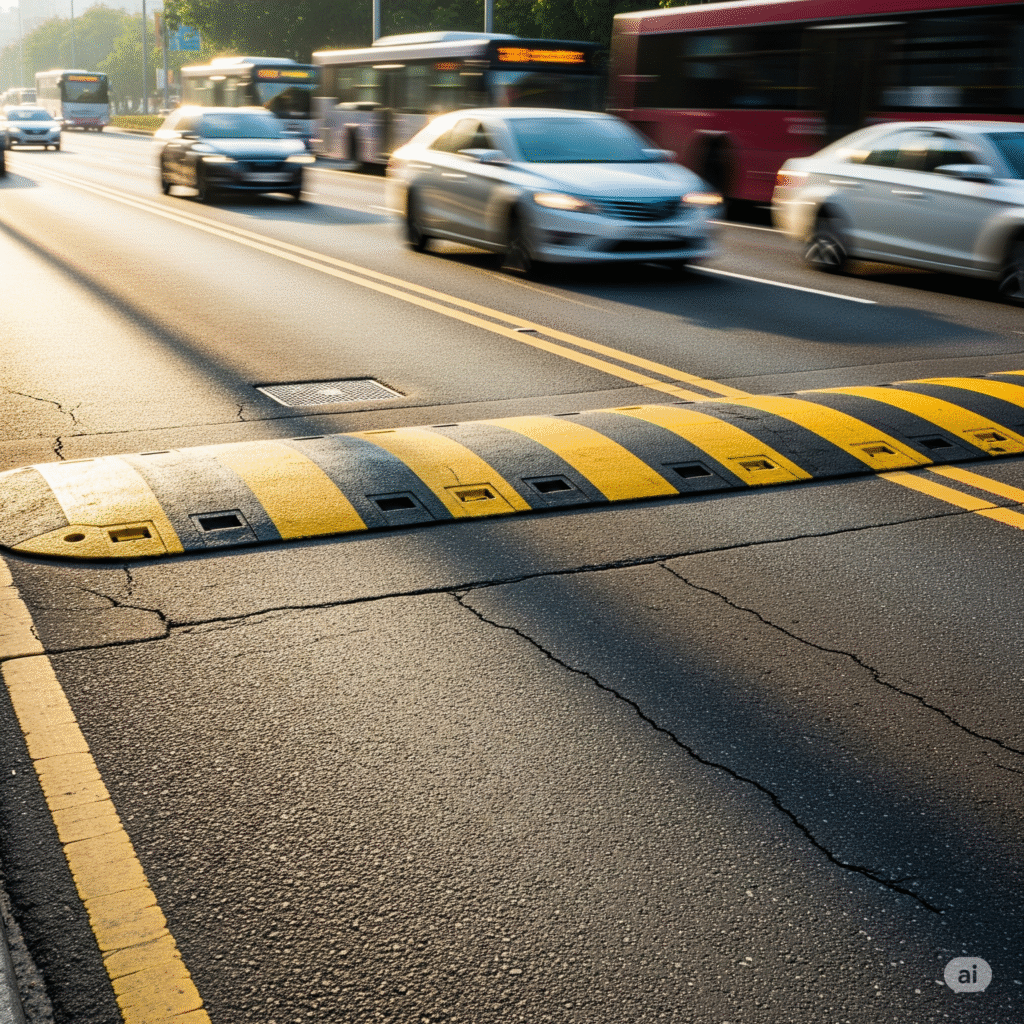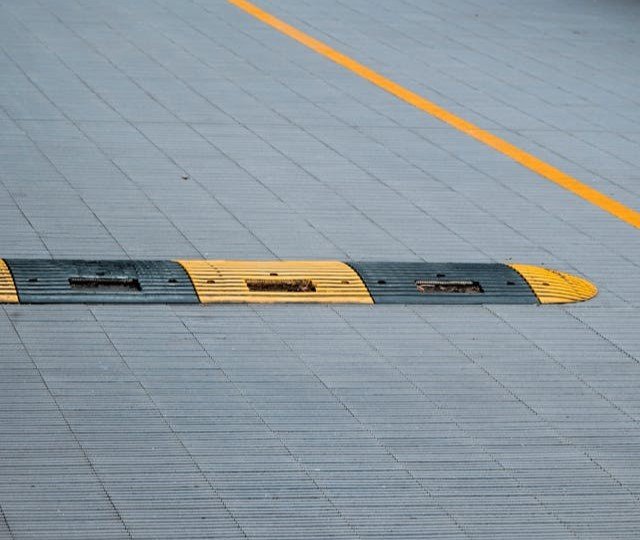Workplace safety is a priority for any organization, particularly in facilities with private roads, large parking areas, or industrial campuses. One of the simplest yet most effective tools for reducing accidents and encouraging safer driving practices is the installation of speed bumps. These physical traffic-calming measures help control vehicle speeds, prevent collisions, and protect employees, visitors, and equipment.
This article explores how speed bumps contribute to safer private roads and outlines practical strategies for organizations to implement them effectively.
The Risks of Uncontrolled Vehicle Speeds
Private roads within industrial parks, corporate campuses, and warehouse facilities often accommodate a mix of vehicles: delivery trucks, forklifts, maintenance carts, and employee cars. Without proper speed management, these areas can become hazardous:
- Increased Accident Potential
Vehicles traveling at high speeds have less time to react to pedestrians, intersections, or other obstacles. Accidents on private roads can lead to serious injuries and property damage. - Pedestrian Safety Concerns
Employees and visitors frequently walk through parking lots or cross private roads. Uncontrolled vehicle speeds significantly increase the risk of collisions in these areas. - Damage to Infrastructure and Equipment
High-speed vehicles can cause damage to roads, landscaping, loading docks, and parked vehicles. Speed bumps help reduce these incidents by forcing drivers to slow down.

How Speed Bumps Reduce Accidents
Speed bumps are designed to slow vehicles by creating a physical obstacle that requires drivers to reduce speed to maintain control. This simple measure has several key safety benefits:
1. Controlling Vehicle Speed
By forcing vehicles to slow down, speed bumps reduce the likelihood of collisions on private roads and in parking areas. Vehicles approaching intersections, pedestrian zones, or loading areas must adjust their speed, allowing more reaction time for drivers and pedestrians alike.
2. Encouraging Cautious Driving
The presence of speed bumps promotes awareness and encourages drivers to be more cautious. Drivers naturally become more attentive to their surroundings, including other vehicles, pedestrians, and potential obstacles. This behavioral change improves overall safety without requiring constant monitoring.
3. Protecting Pedestrians
Speed bumps create safer walking environments by ensuring vehicles slow down in pedestrian-heavy areas. Employees crossing roads between parking lots and buildings are at lower risk of being struck, and visitors are less likely to encounter sudden, high-speed traffic.
4. Reducing Equipment and Vehicle Damage
Slow-moving vehicles are less likely to cause damage to property, parked cars, or delivery equipment. Speed bumps minimize wear and tear on vehicles by encouraging careful navigation of roads, contributing to lower maintenance costs over time.
Best Practices for Installing Speed Bumps
To maximize the effectiveness of speed bumps on private roads, organizations should consider the following strategies:
1. Strategic Placement
Install speed bumps near pedestrian crossings, entrances, exits, and intersections. Avoid placing them in areas where emergency vehicles or heavy trucks may require unimpeded access unless designing with removable or adjustable designs.
2. Proper Design and Materials
Speed bumps vary in height, width, and material composition. Rubber, asphalt, or modular plastic speed bumps are commonly used. The design should be appropriate for the type of traffic and the desired speed reduction. For example, taller bumps are more effective at slowing larger trucks, while gentler ramps work well for employee vehicles.
3. Clear Signage
Signage alerting drivers to the presence of speed bumps is essential. Warning signs placed before the bump give drivers time to reduce speed safely and prevent sudden braking or accidents. Reflective markings enhance visibility, especially during nighttime or low-light conditions.
4. Maintenance and Inspection
Regular inspection ensures speed bumps remain in good condition and continue to provide effective speed reduction. Damaged or worn-out bumps may lose their ability to slow vehicles and can even create hazards themselves.
5. Complementary Safety Measures
Speed bumps work best when combined with other traffic-calming measures, such as clearly marked crosswalks, designated parking zones, and pedestrian pathways. This integrated approach creates a safer overall environment for employees and visitors.

Benefits Beyond Safety
While the primary purpose of speed bumps is to reduce vehicle speed and prevent accidents, they also offer additional advantages for private roads:
- Enhanced Traffic Flow: By controlling speed, speed bumps prevent erratic driving behavior, leading to smoother and more predictable movement of vehicles.
- Reduced Liability Risks: Organizations demonstrate proactive measures to protect employees and visitors, which can reduce legal exposure in case of accidents.
- Support for Operational Efficiency: Slower, more controlled vehicle movement reduces the risk of damage to delivery vehicles, loading docks, and other infrastructure, protecting operational assets.
Conclusion
Speed bumps are a straightforward, cost-effective solution to improving safety on private roads within workplaces, industrial parks, and corporate campuses. By controlling vehicle speed, encouraging cautious driving, and protecting pedestrians and property, speed bumps contribute to a safer, more orderly traffic environment.
Proper placement, design, signage, and maintenance are essential to maximize their effectiveness. When combined with complementary safety measures, speed bumps can significantly reduce accidents and create a safer workplace for everyone.
Looking for a custom Speed Bumps manufacturer or supplier? Struggling to find the right factory to bring your vision to life? We’ve got you covered! At our place, we craft top-quality Speed Bumps with precision and care. Big or small, your needs are our mission. Let’s launch your Speed Bumps project and take your product line to the next level! Click here to contact
